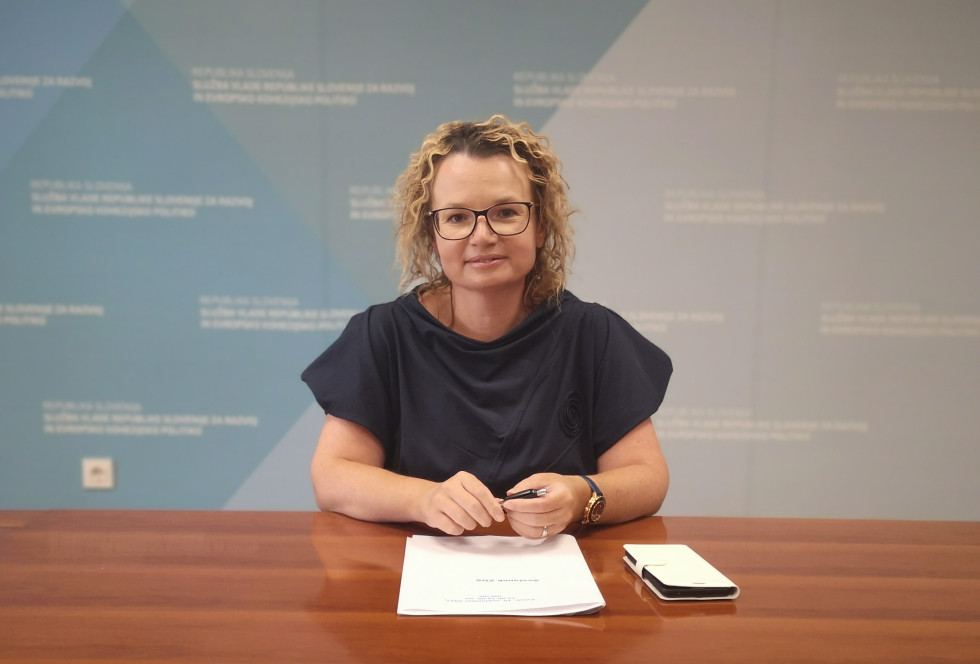State Secretary mag. Monika Kirbiš Rojs met with the representatives of the Association of Municipalities of Slovenia
- Government Office for Development and European Cohesion Policy
At the meeting, State Secretary underlined that Government Office for Development and European Cohesion Policy aims to ensure that EU funding is allocated to all the projects that have been properly designed and that can be realised by 2023 and that the municipalities have planned in their Agreements on the Development of Regions for the period 2014-2020.
State Secretary said that the mechanism of the Agreement on the Development of the Region will be applied also in the new programming period 2021-2027, however, the agreements will be modified and simplified. ‘The project approval process under this mechanism has proven to be too complicated and time consuming which is something that we can simply no longer afford in the new period. We should further improve our absorption capacity in light of the additional funding available under the Recovery and Resilience Facility,’ said State Secretary.
For the next programming period, GODC and the ministries plan to continue allocating EU funding for municipal projects through the so-called territorial approaches, namely ITI – Integrated Territorial Investments for urban development, CLLD – Community-led Local Development for local development, and ERP – Endogenous Regional Policy for nationally designed initiatives.
In additional to the already-known baselines for EU-level programming for the period 2021-2027, Slovenia will give priority to areas with identified gaps. The measures primarily pertain to raising productivity and digitalisation levels by also paying attention to infrastructure (rail connectivity, sustainable mobility, missing larger wastewater collection and treatment systems, third development axis, missing (larger) mechanisms to ensure quality of drinking water, energy-saving renovation of buildings, investing in renewable energy sources etc.).
We believe that the operational programme for the implementation of European Cohesion Policy 2021-2027 will be prepared by the end 2021. At the same time, it is very important that individual sectoral strategies are prepared by various ministries which will actually determine the framework of investments in the period 2021-2027. For example, in the field of wastewater collection and treatment the Operational Programme for Wastewater Collection and Treatment should be designed, in the field of so-called smart investments the Smart Specialisation Strategy needs to be adopted, in the field of circular economy the Waste Management Strategy should be developed. An analysis of market gaps, which will be the basis for determining refundable sources, and a strategic environmental impact assessment should also be prepared. We will develop an implementation system and propose to the government to start with the implementation (including the preparation, approval and publication of calls for proposals and project selection) before the official approval of the programme by the European Commission. The content will already be relatively well defined by GODC and the European Commission.
Member States can expect formal approval of the programming documents in the middle of 2022. In accordance with the principle of complementarity, the measures of the period 2021-2027 will be combined with the resources of Recovery and Resilience Facility.
State Secretary: ‘We will take into account the specific characteristics of individual municipalities, including smaller ones, as not all are in the same position. Municipalities are an important element in the process of programming. We are cooperating with both cohesion regions, the East (Vzhodna Slovenija) and the West (Zahodna Slovenija), and expect them to present concrete proposals.’


